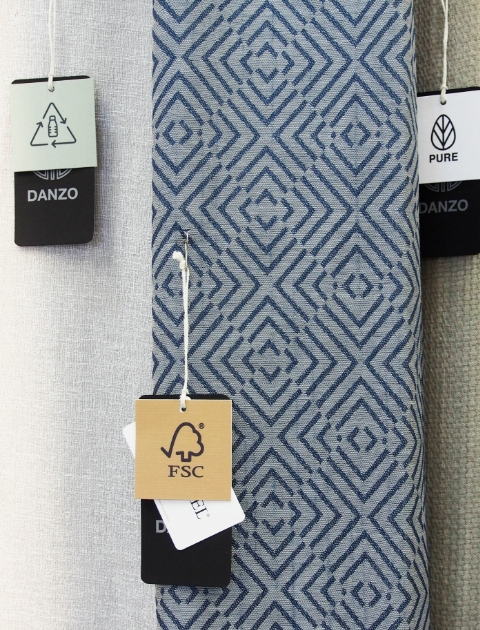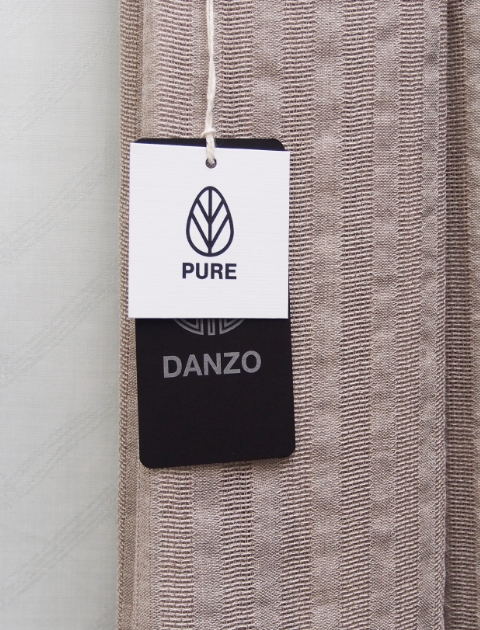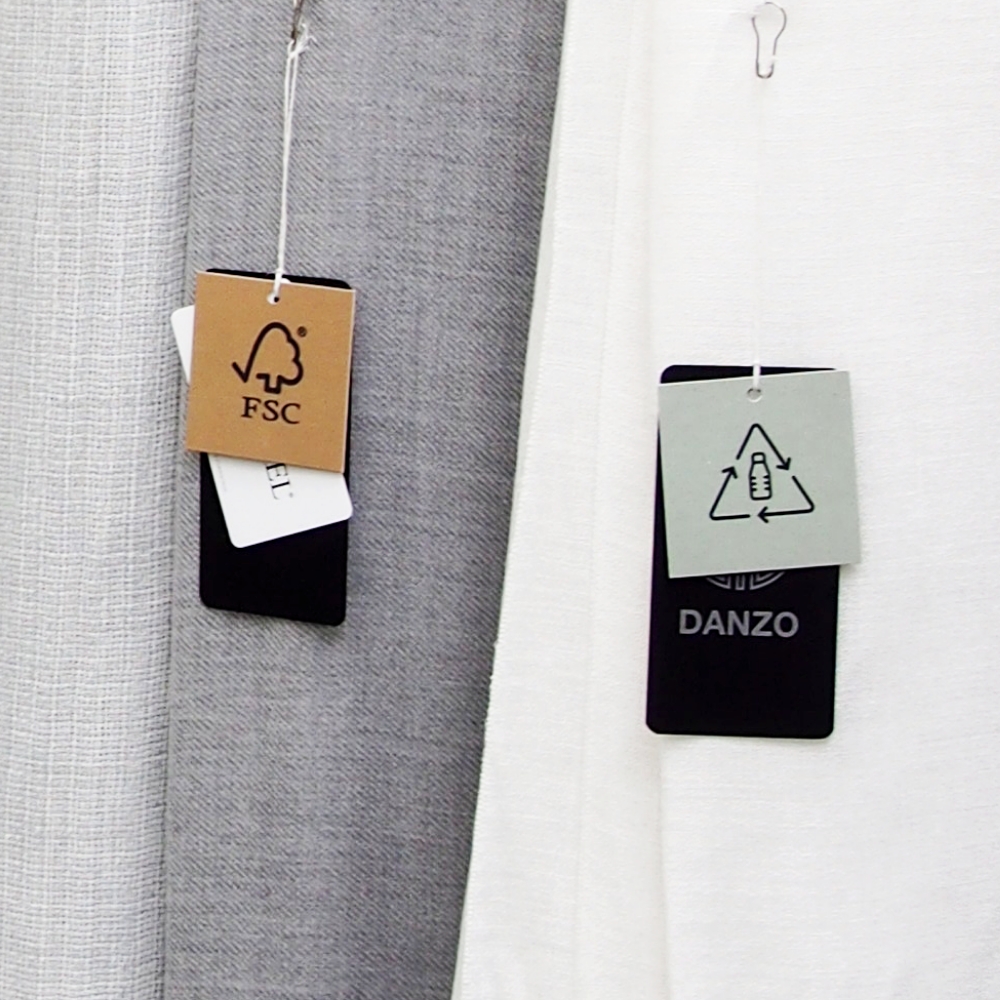Fibers
We provide fabrics in a range of weights, from light curtains to substantial seating furniture.
- pure wool, pure linen, and hemp fabrics;
- (constantly updated and enhanced) mixtures of wool, linen, and hemp, alpaca, cashmere, and silk;
- high-performance products obtained through special blends of noble fibers and synthetic fibers (normal, fireproof, and recycled polyesters);
- low environmental impact fabrics with particularly soft handles, such as Tencel and Micromodal fabrics;
- FSC branded viscose, as a raw material derived from wood pulp, the FSC brand guarantees controlled deforestation (Forest Stewardship Council); recycled fabrics with GRS certification;
- organic fabrics with GOTS certification


LINEN
HEMP
WOOL
COTTON
RECYCLED
NATURAL FIBERS
RECYCLED
POLYESTER FIBERS
TENCEL
FIREPROOF
FIBERS
A noble, sustainable, and ancient fiber.
Linen is one of the oldest and most durable natural fabrics, made from the spindle of flax plants. It has a natural shine and is a strong, crisp fabric. The linen supply chain is especially concerned with sustainability because the fiber is naturally eco-sustainable.
Why linen?
- Very low environmental impact for cultivation and production: the most significant fact is the almost total absence of irrigation and polluting chemicals
- Long lasting, stiff and frizzy
- Resists high temperatures
- Breathable and cool
- Insect resistant
- UV resistant
- Absorbs and releases moisture very quickly
- Biodegradable
- Antistatic
- Hypoallergenic
- Softens after washing and use
An essential fiber for sustainable materials in Northern Italian textile and spinning history (we were among the top producers in the world in the 1900s). Hemp is a natural textile fabric derived from the herbaceous plant Cannabis Sativa, which is native to Asia but has thrived in the Mediterranean and Central Europe.
It is one of the most environmentally friendly fibers since its cultivation:
- does not require pesticides, herbicides, or fertilizers because it is less prone to parasitic assault
- grows quickly (it is called a weed)
- does not require a lot of water
- It has a substantially higher output of fibers extracted per farmed hectare than cotton or linen (its production takes less than a third of the water required for cotton cultivation, while guaranteeing 220% more fiber).
- A hemp crop absorbs more CO2 than a forest of trees;
- the plant restores and enriches the soil where it is grown, freeing it of heavy metals and making it ideal for subsequent crops;
- its roots penetrate up to 3 meters into the ground, protecting it from dangerous erosion phenomena; and
- it is biodegradable and renewable.
- • Highly durable – 8 times stronger than cotton
• Highly rigid
• Breathable and fresh
• Resists UV rays
• Resists mold and insects
• Great thermal isolation allowing the fabrics to protect from cold in the winter months and heat in the summer months
• Hypoallergenic
• Softens after washing and use
One of the two fibers, together with linen, that make up Danzo’s soul.
Why is wool used?
- Thermoregulating, wool has a low thermal conductivity and hence functions as an excellent insulator since it retains a significant volume of air.
- Naturally wrinkle-free – resilient
- High elasticity – it is the most extensible and crease-resistant natural fiber
- Naturally fireproof – it is the least flammable natural fiber
- High absorbency due to hygroscopicity.
- Biodegradable
- Long fibers are suitable for mechanical recycling.
Cotton is the most common crop in the world aside from food.
Half of all textiles produced are made of the fiber. Growing cotton requires 25% of insecticides and 10-16% of pesticides of what is used globally every year. Half of the top pesticides used in growing cotton in the US are deemed likely to be carcinogenic by the United States Environmental Protection Agency.
- 0% hazardous chemicals – No synthetic pesticides
- 98% reduction in water pollution
- 94% reduction in greenhouse effect
- Healthy soil due to organic material spraying
- Land always alive due to crop rotation
- The dyes used have a low environmental impact and do not contain heavy metals
- Fair Labor Guarantee – protects farmers and residents from pesticide-related diseases
- Biodegradable
Why recycled polyester:
- According to the NGO Ocean Conservancy, about 8 million tons of plastic are spread in the oceans each year, adding to the 250 million tons currently circulating in marine habitats (2020). At this rate, the oceans will have more plastic than fish by 2050. Clothes and materials in general are clearly a major contributor to the problem.
In terms of quality, recycled polyester appears to be the same as virgin polyester, however its production uses 59% less energy than virgin polyester. - Because polyester accounts for around 60% of global PET manufacturing – roughly double that used in plastic bottles – the creation of a non-virgin supply chain for polyester fiber has the potential to have a major influence on global energy and resource requirements.
- Recycled polyester aids in the reduction of crude oil and natural gas extraction from the Earth.
- Eco-sustainable vision in the sense of the product’s circular economy, both synthetic and natural. We offer recycled materials that are both synthetic and natural, such as recycled cotton, recycled wool, recycled silk, and recycled linen.
With virtually no negative environmental impact, TENCEL™ Lyocell and Modal fibers contribute to the preservation of environmental equilibrium by blending into the natural cycle. It is a celluloid fiber made from eucalyptus wood from FSC forests that are sustainably managed. This fiber is circular and fully biodegradable. From nature to nature. Because Danzo SRL has been using it for more than ten years, we have accumulated a wealth of knowledge about potential treatments for the fiber as well as the best ways to use, finish, and preserve it in all of its forms, from Tencel staple to Tenluxe (designed to replace silk from an entirely sustainable standpoint). We provide it in the widest range of weights and in several cozy combinations with alpaca, Tencel – cashmere, linen-wool, wool-silk, and linen.
Sustainability in Tencel:
- made from natural sources
- almost zero environmental impact – circular production of lyocell fibres
- reuse of 99.5% of the solvents used
- low water consumption for its production
- biodegradable
- very fresh and dry to the touch
- lasting softness
- unfavorable for bacterial growth
- contributes to perspiration
- gentle on the skin
- minimum static charge
- shine and toughness
- excellent drape
- versatility
Some of our compositions
- LI-LI(ORG) Linen – Organic linen
- CA-CA(ORG) Hemp – Organic hemp
- WO-WO(REC) Wool – Recycled wool
- WV – Pure Virgin Wool
- WS-WS(REC) Cashmere
- WP From alpaca
- WL From lama
- WK From camel
- WY From yak
- LY Lyocell Tencel™
- MD Modal Tencel™
- COT-COT(ORG)-COT(REC) Cotton – Organic Cotton – Recycled Cotton
- PL-PL(REC) Polyester – Recycled Polyester
- PL SORONA Sorona® vegetable polyester
- SE Silk
- PI Paper
- PR From milk proteins
- PA-PA(REC) Nylon







